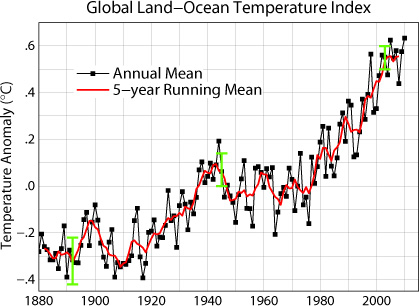Climate Change, What Me Worry?
The portrait artist, Norman Mingo, came up with an image of Alfred E. Neuman based on Mad’s editor Al Feldstein’s direction to “I want him to be loveable, and have an intelligence behind his eyes ... while the world collapses around him.”
Mad magazine and its mascot, Alfred E. Neuman, used this phrase “What – Me Worry?” in an early magazine issue in 1959. This phrase came to be defined and used in the context of, “could care less,” “couldn’t care less,” “someone who doesn’t care about anything,” “fiddling while Rome burns,” and others.
Perhaps his image [not included here] and meaning captures some of the views and what little constructive discussion there is about climate change we hear in the media, both in the public and political sphere, today. “What Me Worry?”
Meanwhile, emission of the greenhouse gas carbon dioxide continues to increase and, governments around the world have still not agreed on a plan to address this issue. Some steps have been taken but the simple physics of warming is continuing even as many deny this process. The upcoming international meeting in Paris in December will tell us a lot about whether more progress will be made to address this global issue.
For example; let’s look at the Global Land-Ocean Temperature Index through July this year.

The planet is at an all-time high temperature for the first 7 months of this year and many scientists think that with an el-Nino starting, 2015 will break the record for the warmest year for which we have recorded data. The previous record year for the planet was 2014.
In addition to higher global temperatures, scientists recently reported that the global sea level rise has been 3 inches since 1992. The fact that oceans already cover 70% of the Earth’s surface should get much more attention from the media and our politicians.
Where is it all this additional water coming from? Quite simply, it is coming from ice melt on land [Greenland, Antarctica, mountain glaciers] as well as the expansion of water as it warms.
The image, “Greenland Mass Change from GRACE Gravity Data,” tells us part of the story. One key point in this image of Greenland is the dark up-and-down line that starts at the upper left and goes down to the lower right. It reflects the mass loss of ice over the past 10 years in gigatons [billions of tons].
From this one ice sheet alone more than 250 gigatons of water are being added to the oceans each year. That is equivalent to 250 billion tons, or the amount of water in 100,000,000 Olympic swimming pools; and, the rate of melting is increasing.
The IPCC is projecting that sea level rise will be between 1 – 3 feet by 2100.
NASA’s climatologist Tom Wagner said recently, “People need to understand that the planet is not only changing, it’s changed.”
The president articulated this this well in a speech he gave in Alaska August 31 2015, “...But if these trend lines continue the way they are, there’s not going to be a nation on this Earth that’s not impacted negatively. People will suffer. Economies will suffer. Entire nations will find themselves under severe, severe problems. More drought; more floods; rising sea levels; greater migration; more refugees; more scarcity; more conflict...”
The interesting thing about our changing climate is that we have the technology and means today to address this issue. Case in point is a recent paper by Jacobson et al 2015 that demonstrates thatrenewables can meet 100% of ALL energy needs in the U.S., [yes, the whole country] and not just electricity.
See their diagram here. The left vertical axis “U.S. POWER SUPPLY” in TW [terawatts], and the decades up to 2050 along the bottom horizontal axis detail how this transition from fossil fuels to renewables can be made. The author’s 132 page report, is free, and can be found on the web.
It is achievable!
There is further progress too. Student activists [see photo], have convinced the administration at University of California that they must “divest” from its investment fund, $200 million dollars of holdings in coal and tar sands, two of the most polluting sources of energy we have.
Stay tuned.
The scientific career of Raymond N. Johnson, Ph.D., spanned 30 years in research and development as an organic/analytical chemist; he is currently founder and director of the Institute of Climate Studies USA (www.ICSUSA.org). Climate Science is published the first Sunday of every month.



